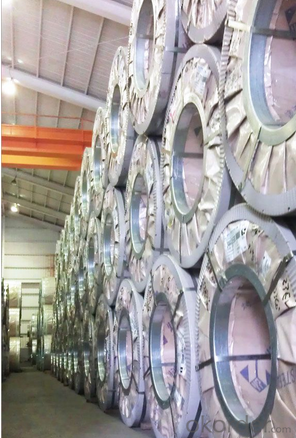Quick Details
Standard: ASTM
Grade: CS Type A
Type: Steel Coil
Surface Treatment: Galvanized
Application: Commercial steel
Width: 600-1534mm
Length: Coil
OKorder Service Pledge
OKorder Financial Service
You Might Also Like
Standard: ASTM
Grade: CS Type A
Type: Steel Coil
Surface Treatment: Galvanized
Application: Commercial steel
Width: 600-1534mm
Length: Coil
| Packaging Details: | Oscillated wound: one coil per bundle, inner is the protecting humidity-proof wax paper. Medium is plastic film. Outer is sackcloth or compound paper packing. Coil to be laid on single type pallet (one pile per pallet) |
|---|---|
| Delivery Detail: | Depends on specification and order quanity. |
| Typical size range: | 0.3 – 2.0mm Thick 1000 to 1250mm Wide |
| Alu-Zinc coating: | 40 to 180g/sqm on a cold rolled base |
| Spangle: | Zero and regular |
| Surface treatment: | Chromate passivation; environment protection passivation; oiling; phosphated; anti-finger print |
| Steel grades: | DX51D+AZ; SGCH; SGLCC; SGCD1; SGLCD1; CS TYPE A/B/C; FS TYPE A/B |
Feature
ppgi (prepainted steel coil
metal roofing,
guarantee length,more metre
standard export package
good resistance of corrosion
What is the application of Steel Coil?
There are two sides,one is out side: Workshop, agricultural warehouse, residential precast unit, corrugated roof, roller shutter door, rainwater drainage pipe, retailer booth;the other is inside: Door, doorcase, light steel roof structure, folding screen, elevator, stairway, vent gutter.

Send your message to us
OKorder Service Pledge
OKorder Financial Service
Similar products
Hot products
Hot Searches
Related keywords